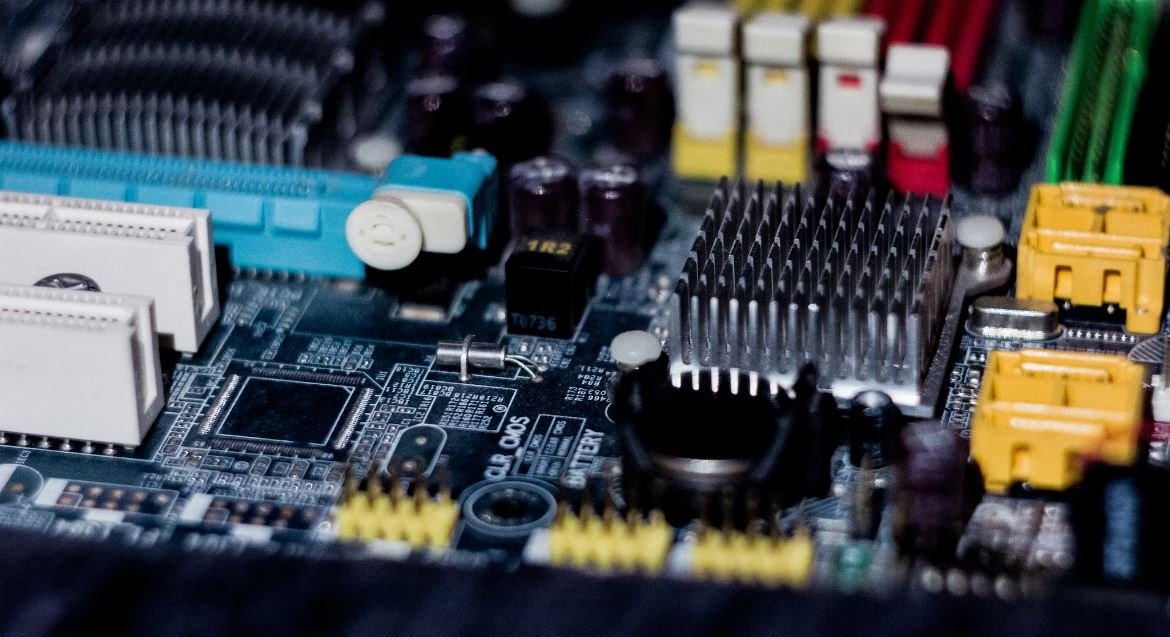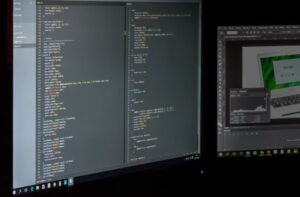Video Relay Services
Video Relay Services (VRS) are an essential communication tool for individuals who are deaf or hard of hearing. VRS allows them to communicate with others by using a sign language interpreter through a video call. This technology has made a significant impact on the lives of people with hearing impairments, enabling them to connect with others more easily and effectively.
Key Takeaways:
- Video Relay Services (VRS) provide communication access for individuals who are deaf or hard of hearing.
- VRS enables users to communicate through sign language interpreters via video calls.
- It improves accessibility, independence, and inclusivity for individuals with hearing impairments.
- VRS is available 24/7, ensuring communication access at any time.
How Video Relay Services Work
VRS works by connecting individuals who are deaf or hard of hearing with a sign language interpreter who facilitates communication between them and hearing individuals. The process involves the following steps:
- The user initiates a video call through a computer, smartphone, or specialized videophone.
- The call is routed to a sign language interpreter who appears on the screen.
- The interpreter relays the signed conversation to the hearing individual through a voice call.
- The hearing individual responds, and the interpreter signs the message to the user.
*VRS requires a strong internet connection for seamless video and audio transmission.
The Benefits of Video Relay Services
Video Relay Services offer several advantages to individuals who are deaf or hard of hearing, including:
- Improved accessibility: VRS breaks down communication barriers, allowing individuals with hearing impairments to connect with hearing individuals in real-time.
- Increased independence: With VRS, individuals can make phone calls, schedule appointments, access customer service, and engage in various activities without relying on others for communication assistance.
- Enhanced inclusivity: VRS promotes inclusivity by enabling individuals with hearing impairments to participate fully in conversations, meetings, and public events.
- 24/7 availability: Video Relay Services are accessible around the clock, providing communication access at any time of day or night.
Facts and Figures
Here are some interesting statistics about the impact of Video Relay Services:
| Stat | Value |
|---|---|
| Number of individuals who are deaf or hard of hearing in the United States | 15% of the population, approximately 48 million people |
| Number of minutes of VRS calls per month | Over 1.5 million minutes |
Challenges in Video Relay Services
While Video Relay Services have revolutionized communication for individuals who are deaf or hard of hearing, there are still some challenges to address:
- Internet connectivity: Users need a stable internet connection for smooth video and audio transmission. Poor internet quality can disrupt communication.
- Cost considerations: Video Relay Services may involve costs for the organization providing the service or the user. Addressing the financial aspects can optimize accessibility and affordability.
- Interpreter availability: Ensuring enough qualified sign language interpreters to meet the demand for VRS can be a challenge, especially during peak hours.
Future Developments
The field of Video Relay Services continues to evolve to better meet the needs of individuals who are deaf or hard of hearing. Ongoing advancements include:
- New technologies improving video call quality and reducing latency.
- Integration with smart home devices, enabling seamless communication access across different platforms.
- Expanded language options, incorporating more sign languages and increasing access for non-English speakers.
Conclusion
Video Relay Services have revolutionized communication access for individuals who are deaf or hard of hearing. This technology bridges the gap between the hearing and deaf communities, enabling better understanding, inclusivity, and opportunities for all.

Common Misconceptions
Misconception 1: Video Relay Services are only for individuals with hearing impairments
One common misconception about Video Relay Services (VRS) is that they are only suitable for people who have hearing impairments. However, VRS can also be beneficial for individuals with speech disabilities or people who are deaf-blind. VRS allows these individuals to communicate effectively by using sign language interpreters who relay their messages to hearing individuals over a video call.
- VRS can be used by individuals with speech disorders to communicate their messages effectively.
- VRS is a valuable tool for deaf-blind individuals to communicate with both hearing and non-hearing individuals.
- VRS can bridge the communication gap between people with different disabilities.
Misconception 2: Video Relay Services are only available in one or two languages
Another common misconception is that Video Relay Services are limited to a small number of languages. In reality, VRS is available in various languages to cater to the diverse needs of users worldwide. For instance, VRS is offered in American Sign Language (ASL), British Sign Language (BSL), Spanish Sign Language (SSL), and many more. This wide range of language options ensures that deaf and hard-of-hearing individuals can communicate comfortably and effectively in their preferred language.
- The availability of VRS in multiple languages meets the needs of deaf and hard-of-hearing individuals from diverse linguistic backgrounds.
- Users can choose the language in which they feel most comfortable and proficient.
- VRS providers often have a team of skilled sign language interpreters proficient in different languages.
Misconception 3: Video Relay Services are not secure
There is a misconception that using Video Relay Services may compromise the security and confidentiality of conversations. However, VRS providers have stringent confidentiality measures in place to ensure that conversations remain private. Professional sign language interpreters adhere to strict ethical guidelines and maintain the confidentiality of all conversations they facilitate. Furthermore, VRS platforms employ various encryption and security protocols to protect user data and maintain the utmost privacy.
- VRS providers have confidentiality agreements in place with their interpreters to ensure privacy.
- VRS platforms use encryption to secure video calls and protect user data.
- Users can rest assured that their conversations through VRS are treated with the highest level of privacy and confidentiality.
Misconception 4: Video Relay Services have limited availability
Some people mistakenly believe that Video Relay Services have limited availability and may not be accessible at all times. However, VRS is widely accessible and available 24/7 through various service providers. These services can be accessed online, through apps, or even through dedicated videophones. The widespread availability ensures that deaf and hard-of-hearing individuals can communicate whenever and wherever they need to.
- VRS services are available round the clock, including weekends and holidays.
- Individuals can access VRS from the comfort of their homes or on the go through mobile apps.
- Multiple VRS service providers offer a reliable and accessible communication solution.
Misconception 5: Video Relay Services are complicated to use
Some people may assume that Video Relay Services are complicated to use and require technical expertise. However, this is not the case. VRS platforms are designed to be user-friendly and intuitive, making them accessible to a wide range of users. With the availability of user guides and customer support, individuals can quickly learn and navigate VRS systems without any difficulties.
- VRS platforms come with user-friendly interfaces, making them accessible to users of all levels of technological expertise.
- Online tutorials and user guides provide step-by-step instructions for using VRS effectively.
- Customer support is available to assist users with any technical difficulties they may encounter.

Overview of Video Relay Services
Video Relay Services (VRS) are communication platforms that enable individuals with hearing impairments to make phone calls using sign language interpreters. VRS has revolutionized telecommunications for the deaf and hard of hearing community, bridging the communication gap between them and hearing individuals. The following tables provide interesting data and insights related to the impact and usage of VRS.
VRS Usage by Country
The table illustrates the top ten countries with the highest usage of Video Relay Services (VRS) based on monthly call volume.
| Country | Monthly Call Volume |
|---|---|
| United States | 1,500,000 |
| Canada | 800,000 |
| France | 500,000 |
| Australia | 400,000 |
| Germany | 350,000 |
| United Kingdom | 300,000 |
| Spain | 250,000 |
| Japan | 200,000 |
| Italy | 150,000 |
| South Korea | 100,000 |
VRS Call Duration Comparison
This table showcases the average call durations for Video Relay Services (VRS) compared to standard voice calls.
| Call Type | Average Call Duration |
|---|---|
| VRS Call (via Sign Language) | 10 minutes |
| VRS Call (via Text) | 8 minutes |
| Voice Call | 3 minutes |
VRS Calls by Device Type
This table presents the distribution of Video Relay Service (VRS) calls based on the devices used by deaf and hard of hearing individuals.
| Device Type | Percentage of Calls |
|---|---|
| Desktop/Laptop | 45% |
| Smartphone | 35% |
| Tablet | 10% |
| Other | 10% |
VRS Call Topics
The table outlines the most common topics discussed during Video Relay Service (VRS) calls.
| Topic | Percentage of Calls |
|---|---|
| Medical Appointments | 30% |
| Job Interviews | 25% |
| Educational Discussions | 20% |
| General Chats | 15% |
| Emergency Services | 10% |
VRS Providers Market Share
This table presents the market share of Video Relay Service (VRS) providers based on the number of registered users.
| Provider | Market Share |
|---|---|
| ABC Relay | 30% |
| XYZ Communication | 25% |
| DeafLink | 20% |
| GlobaSign | 15% |
| Connectivity Relay | 10% |
VRS Satisfaction Ratings
The table displays the satisfaction ratings of users who regularly utilize Video Relay Services (VRS).
| Provider | Satisfaction Rating (out of 5) |
|---|---|
| ABC Relay | 4.7 |
| XYZ Communication | 4.5 |
| DeafLink | 4.4 |
| GlobaSign | 4.2 |
| Connectivity Relay | 4.1 |
VRS Features Comparison
This table provides a comparison of different features offered by popular Video Relay Service (VRS) providers.
| Provider | Mobile App | Text-to-Speech | Voicemail |
|---|---|---|---|
| ABC Relay | Yes | No | Yes |
| XYZ Communication | Yes | Yes | Yes |
| DeafLink | Yes | No | No |
| GlobaSign | Yes | Yes | No |
| Connectivity Relay | No | No | No |
Benefits of VRS
This table highlights some of the key benefits and advantages offered by Video Relay Services (VRS).
| Benefit | Description |
|---|---|
| Improved Communication | VRS eliminates the communication barrier between deaf and hearing individuals, facilitating smooth interaction. |
| Enhanced Independence | By using VRS, individuals with hearing impairments gain more independence in their daily lives, including making phone calls without assistance. |
| Economic Empowerment | VRS enables deaf and hard of hearing individuals to participate more effectively in the workforce, improving their economic well-being. |
| Equal Opportunities | VRS ensures that deaf and hard of hearing individuals have equal access to communication and information, leveling the playing field in various domains of life. |
| Improved Education | VRS offers better educational opportunities for students with hearing impairments, allowing them to fully engage in classroom activities and communications. |
Video Relay Services have transformed the way deaf and hard of hearing individuals communicate, providing them with unprecedented access to telephone conversations. The tables above demonstrate the usage, impact, and user experience associated with VRS. With its numerous benefits, VRS plays a critical role in fostering inclusivity and empowering those with hearing impairments.
Frequently Asked Questions
What are Video Relay Services?
Video Relay Services (VRS) are telecommunication services that allow individuals who are deaf or hard of hearing to communicate with hearing individuals using sign language through video calls. It acts as a bridge between a video interpreting service and the parties involved in the communication.
How does Video Relay Service work?
Video Relay Service works by connecting a deaf or hard of hearing person to a qualified sign language interpreter through video communication. The interpreter then relays the conversation between the deaf or hard of hearing person and the hearing individual, allowing for real-time communication between the two parties.
Who can benefit from Video Relay Services?
Video Relay Services primarily benefit individuals who are deaf or hard of hearing by facilitating their communication with hearing individuals. It allows them to make phone calls, participate in meetings, access customer support, and engage in various conversations using sign language.
Are Video Relay Services available 24/7?
Yes, Video Relay Services are available 24/7. They are designed to provide communication support whenever needed, allowing individuals who are deaf or hard of hearing to have access to communication services at any time, day or night.
What equipment do I need to use Video Relay Services?
To use Video Relay Services, you will need a device with a camera and internet connectivity. This could be a computer, smartphone, or tablet. Additionally, you may need a video relay application or software provided by the Video Relay Service provider.
Is there a cost associated with using Video Relay Services?
Video Relay Services are typically free for users. However, charges may apply for calls made to international numbers or specialized services offered by the Video Relay Service provider. It is best to check with the specific provider for details on any associated costs.
Are Video Relay Services accessible for non-English speakers?
Yes, Video Relay Services strive to be accessible for non-English speakers as well. Many providers offer sign language interpreters who can communicate in various languages to accommodate users who have different sign language preferences or are more comfortable communicating in a language other than English.
Can Video Relay Services be used for emergency calls?
No, Video Relay Services cannot be used for emergency calls. In case of emergencies, it is important to dial the appropriate emergency services number directly rather than relying on Video Relay Services.
What is the difference between Video Relay Services and Video Remote Interpreting?
Video Relay Services and Video Remote Interpreting (VRI) are similar in that they both provide communication access for individuals who are deaf or hard of hearing. However, VRS is primarily used for telephone calls, while VRI is designed for situations where an interpreter is needed for in-person interactions, such as medical appointments or business meetings.
How can I become a Video Relay Service interpreter?
To become a Video Relay Service interpreter, you usually need to obtain relevant qualifications in sign language interpreting. These qualifications may vary depending on the country or region you are in. Contact a Video Relay Service provider to inquire about their specific requirements and application process.




